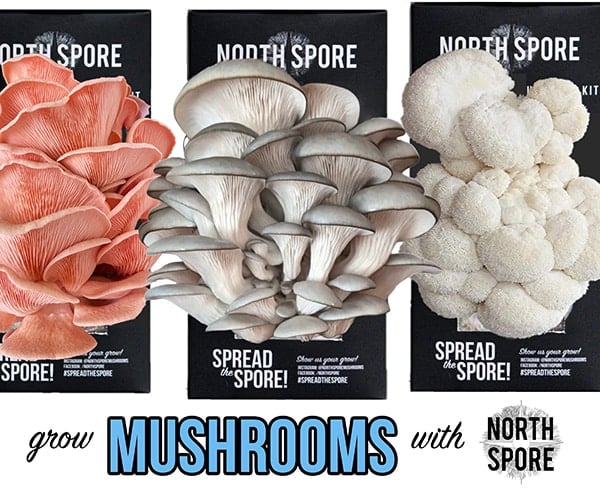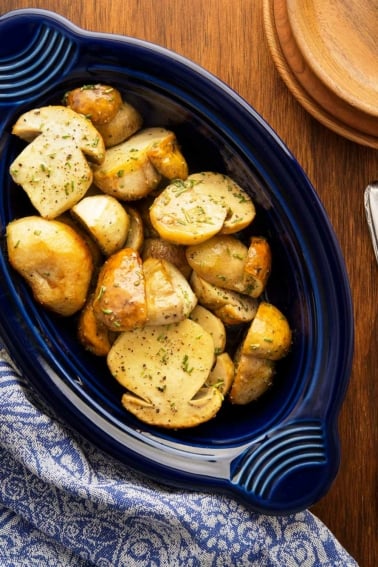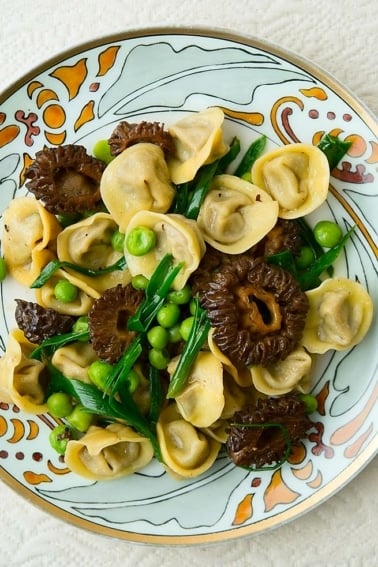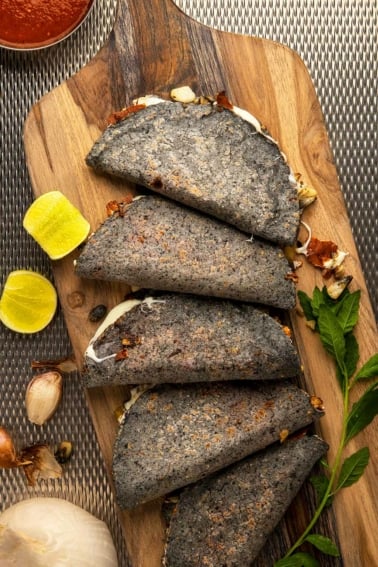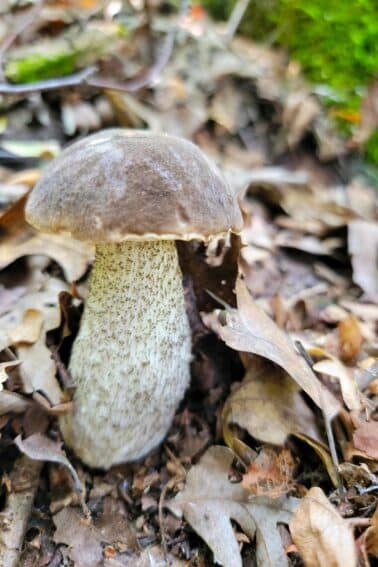How to Identify and Cook Honey Mushrooms
December 27, 2010 | Updated January 15, 2024
As an Amazon Associate I earn from qualifying purchases.
Honey mushroom is a generic term for a wide complex of wild mushrooms in the Armillaria family, usually A. mellea. Yes, honey mushrooms are edible, with a few caveats. Here’s how to identify, harvest, cook and preserve them.
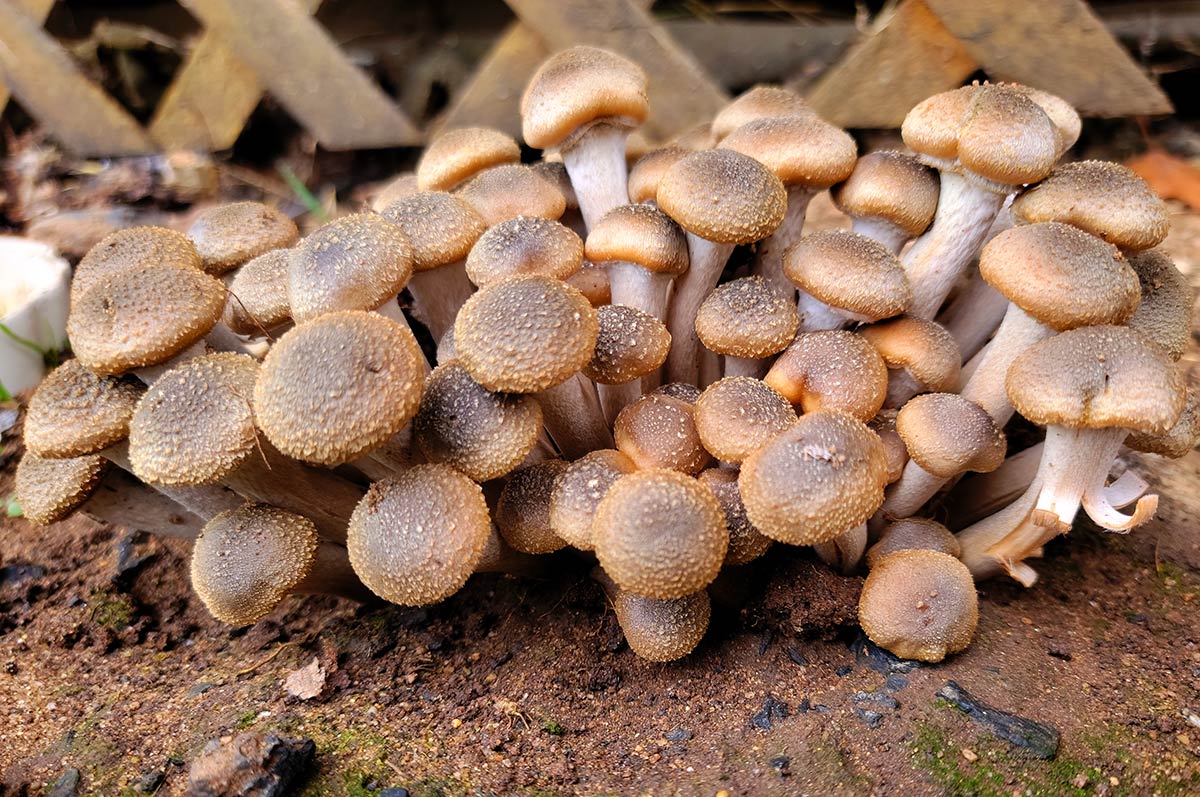
See these? These are primo honey mushrooms. Regardless of species, you want to pick a honey mushroom young, like real young. This patch is in my yard, and it emerged maybe four or five days before I took this picture.
Timing matters with honey mushrooms, although they are still kinda-sorta edible when they get old. More on that in a moment.
Habitat and Range
Honey mushrooms are a circumboreal species, usually found in temperate places, meaning not the tropics. Imagine a ring starting in the boreal forest and extending down into the American South, Europe, and Russia, as well as China.
Mostly you will find them north of a line running from about Fresno, California to about Charlotte, North Carolina, but a few species, like the ringless honey, can be found as far south as Florida.
They are a decomposing mushroom that eats wood and causes “white rot.” If you have it in your yard, as I do, good luck getting rid of it. Killing a honey mushroom is notoriously difficult.
Look at the base of trees, around stumps, and around piles of fallen logs. Honey mushrooms are always in a cluster.
You will find honey mushrooms when the weather is cool and damp. I’ve gathered them in Virginia as early as September, and as late as January here in Sacramento. I’ve never seen them in spring.
Identifying a Honey Mushroom
You want to be very sure about what variety of mushroom you have before you go eating it. This is always good policy, but there are a few poisonous mushrooms that bear a passing resemblance to a honey mushroom, notably the sulfur tuft and the various pholiota species.
You use a “key” to identify a honey mushroom. I’ll walk you through it.
I highly recommend buying a book like David Arora’s Mushrooms Demystified, which contains long “keys” consisting of scores of “if-then” statements. For example, if the mushroom has a ring on the stalk, go to No. 12. If not, go to No. 18, and so on. You start with guidebook pictures to get you in the ballpark, then move on to the more detailed key to confirm your guess.
This is absolutely necessary when you are trying to see if a mushroom that is new to you will taste good, be boring — or will dissolve your liver. Beware of the mycological siren song that traps many a mushroom hunter: It is a common — and potentially lethal — mistake to make a square peg fit into a round hole, mentally downplaying one aspect of a mushroom so it can fit into the edible hole you want it to be in. Dangerous.
Let’s take a closer look at the honey mushroom.
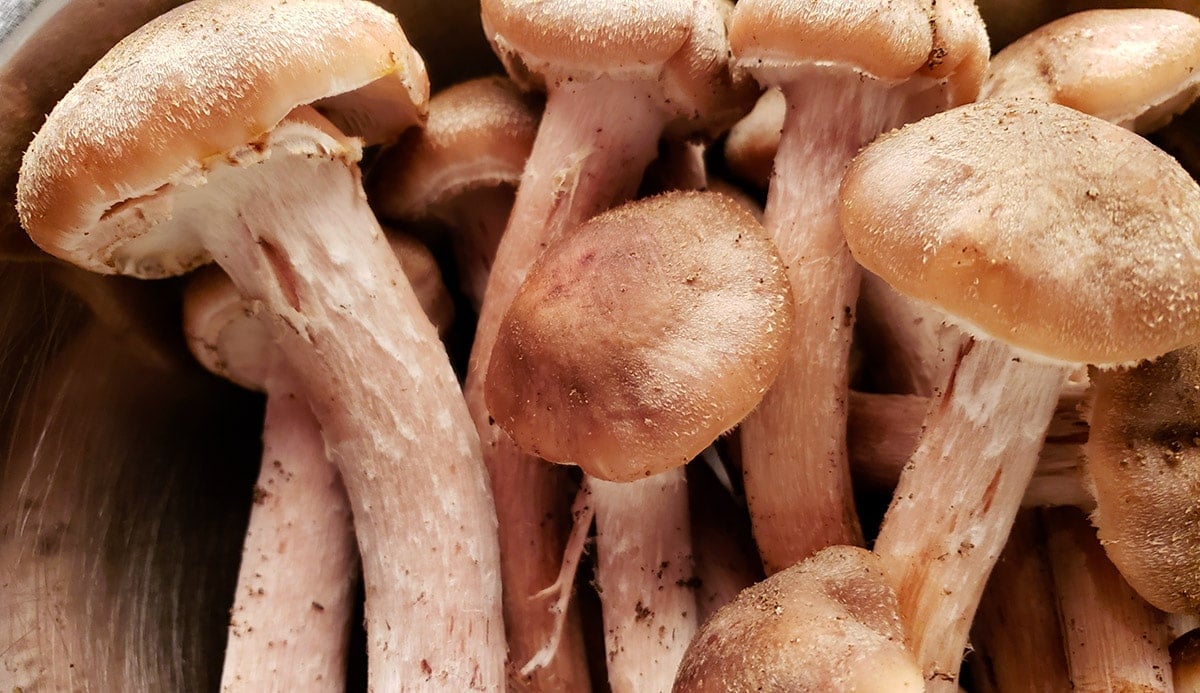
What makes a honey mushroom a honey mushroom? Lots of things, but there are two important markers to look for beyond three easy ones: where it’s growing, is it in a cluster and does it have the ring around the stalk? (Although there is a ringless honey mushroom, A. tabascens) The first important marker is whether the cap has five o’clock shadow:
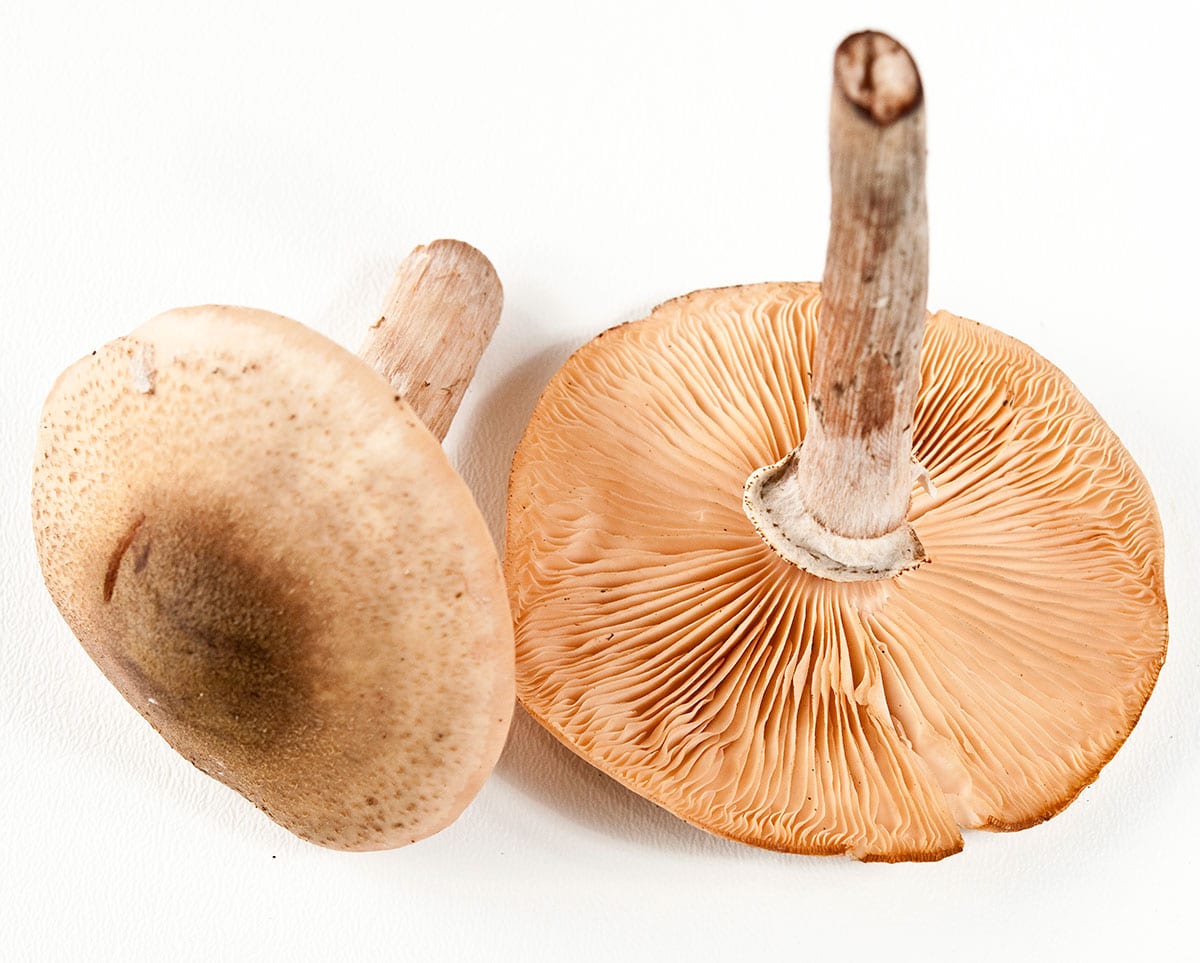
These little hairs, or speckly fuzzy things on the cap are a hallmark of a honey mushroom — which, incidentally, is so named for the range of colors it can have on the cap rather than its flavor. Look for these markings. You can see them even in the really young honey mushrooms in the top picture as pimply dots.
A second tell-tale marker is the mushroom’s gills: Honey mushroom gills are decurrent, meaning they run down the bottom of the cap and onto the top of the stalk, down to the mushroom’s faint ring.
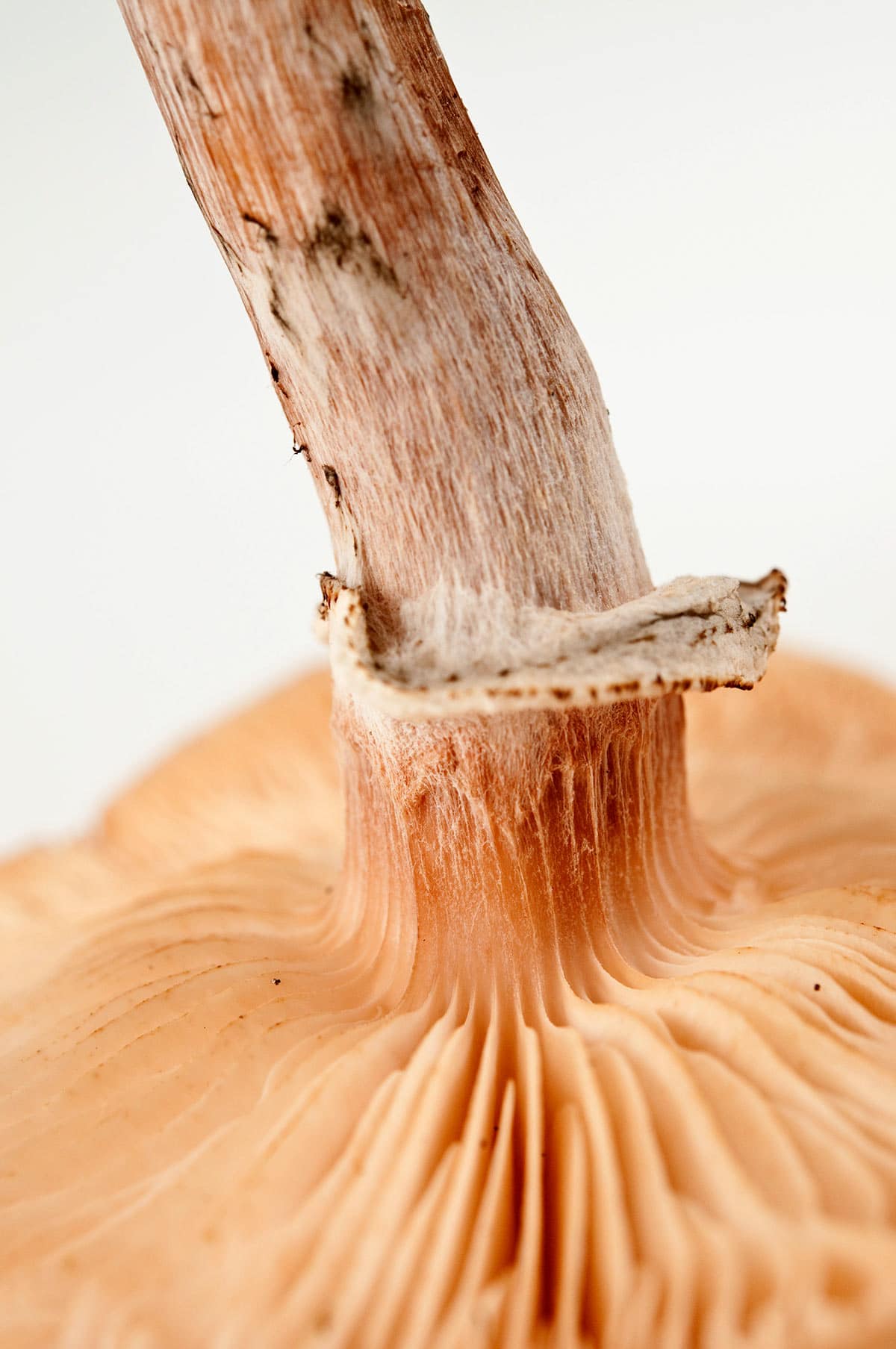
A final test is a spore print. It’s like a fingerprint for a mushroom, and will often confirm your best guesses after keying the thing out. To make a spore print, you slice off the stem of a mushroom and lay the cap, gills down, on paper. Ideally, you do a couple of prints: One on white paper, another on a darker paper. This is because a lot of mushrooms have white spores, which won’t show up on a piece of white paper.
Honey mushrooms have white spores.
Harvesting Honeys
Unless they are those pretty little buttons, you will want to collect only the caps of honey mushrooms. As the mushroom ages, the stalks get fibrous and not fun to eat — although they make a perfectly fine mushroom stock. Try to keep dirt out of the gills because they are a pain to clean.
Once gathered, set your honey mushrooms on paper towels in a lidded container in the fridge. They will keep this way for a week or so.
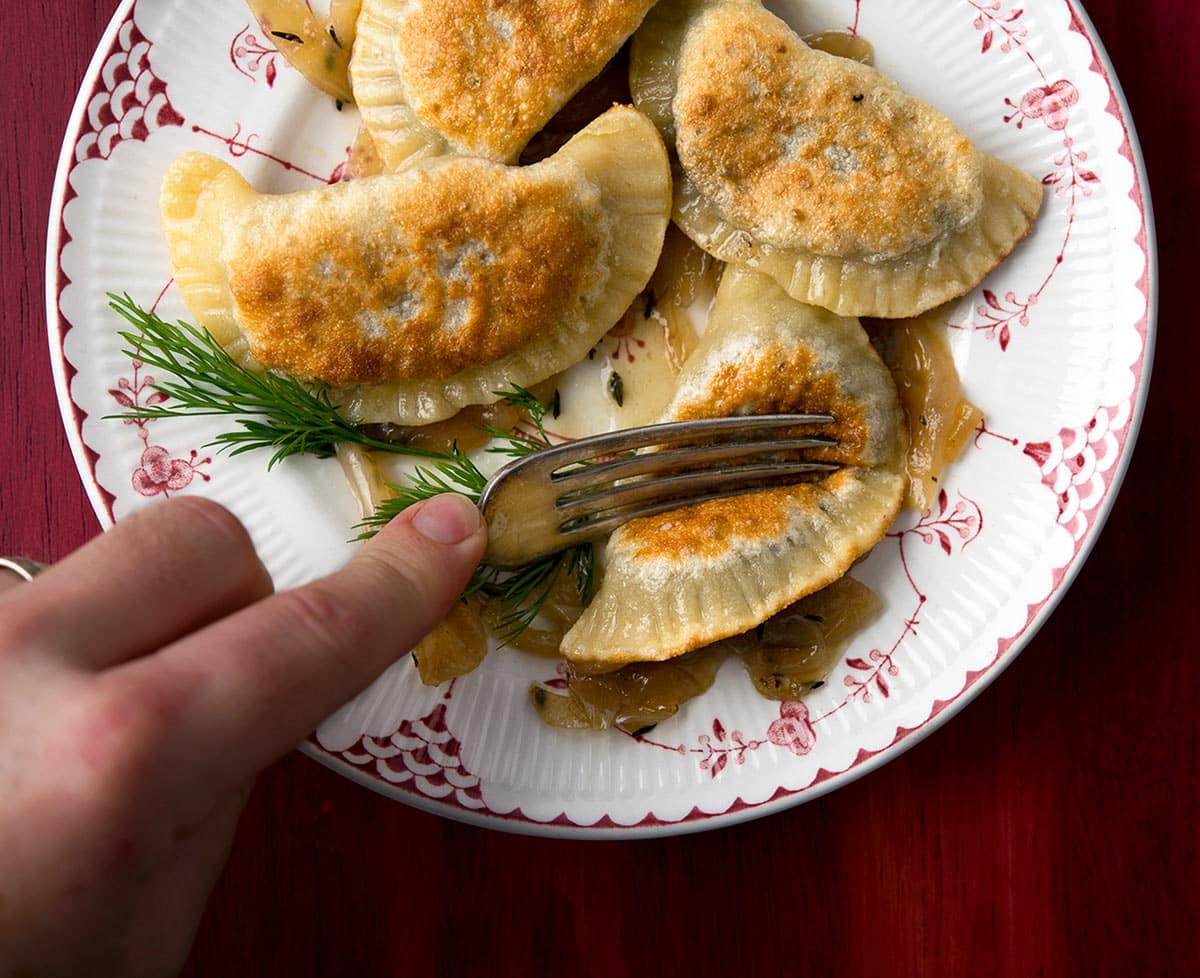
Cooking Honey Mushrooms
Before I start with this one, I need to tell you why you will never see a honey mushroom at the supermarket: It’s because a certain, measurable percentage of people who eat them, get a stomach upset. It’s not so much a toxin as it is an inability to digest them. It presents as a stomach ache and unhappy innards for a day or so.
So the first time you eat honey mushrooms, go easy. And wait a day.
Second caveat: Honey mushrooms must be thoroughly cooked. No quick sauté. Honeys need to be braised, stewed, or roasted for more than 1o minutes or so, and I always cook mine more than 30 minutes. An hour is better.
Third caveat: A honey mushroom is the mycological equivalent of okra, or nopales. Yeah I’m talking about slime. Honeys are not nearly as slimy as okra or nopales, but they are. This is why they are not terribly loved among most mushroom hunters: They are not a “fry it in butter and eat” sort of mushroom.
But this thickening effect is perfect when the mushrooms are part of a filling, or a stew.
Other good recipes for honey mushrooms include:
- Nothing beats using honeys as a filling for mushroom pierogi.
- Filling for bierocks, bready rolls stuffed with sauerkraut and other good things.
- Polish style salted and fermented mushrooms.
- A wild mushroom ragu or pasta sauce.
- You can mince the honey mushrooms and use them in place of morels in this sauce for venison or beef.
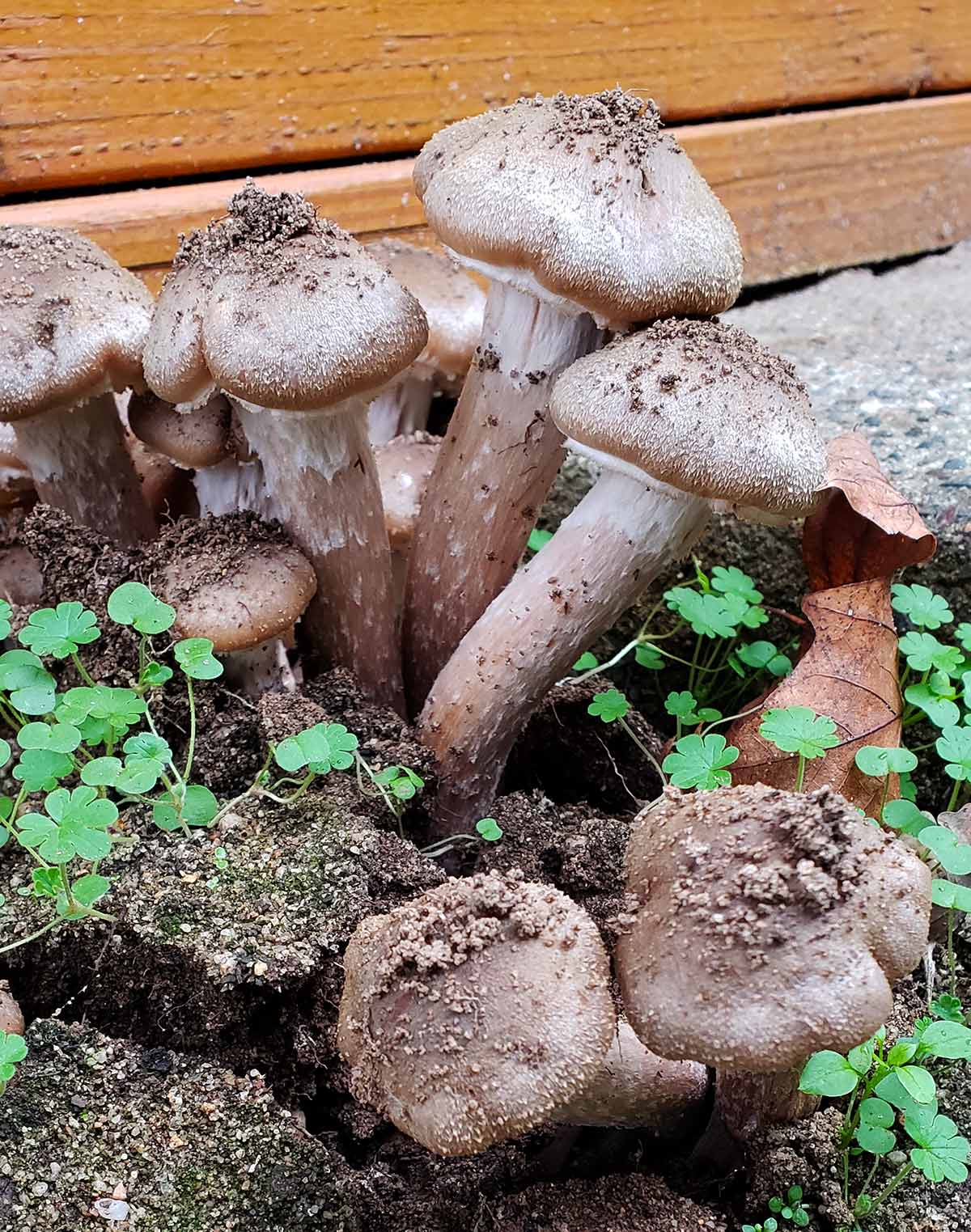
Preserving
I’ve tried pickling honey mushrooms, and, well, it was a slime fest. Not my thing. You absolutely can dehydrate them, and it’s a great way to preserve them for winter stews. That’s my go-to method. Just dehydrate at low temperature until the mushrooms get brittle and papery. It takes about 8 hours or so.
Another method is to cook, then freeze. This works well, too, but occupies freezer space, which is at a premium at my house. A good option for this is to pre-make a filling for, say, mushroom pierogis, or mushroom ravioli, and then vac-seal and freeze that.
In case you are wondering, yes, all this work is worth the effort. Too many foragers shy away from mushrooms because they are scary. And those who do typically stick with the traditionals — morels, porcini, chanterelles.
But scores of edible mushrooms live among us, and, if you are careful about identifying them, they can enrich your cooking in ways few other ingredients can. Many, like the honey mushroom, have special traits that you can take advantage of — if you know how to tap into them.
